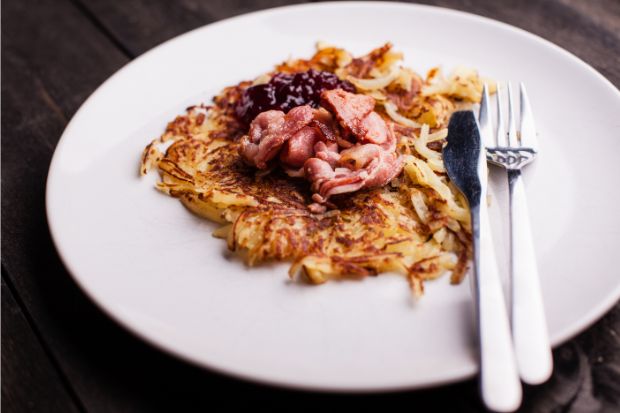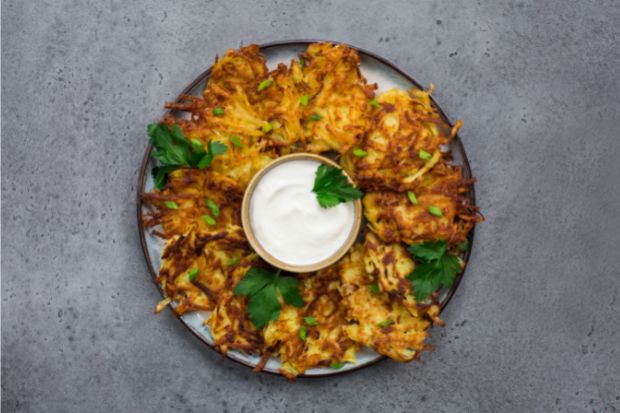If you’re anything like me, you love potatoes in all their forms. I particularly love fried potatoes. There are so many varieties of fried potatoes they can often get confused for one another. If you’ve always wondered what the difference between latkes and hash browns is, we’ve got the lowdown for you.
What Are Hash Browns?

Hash browns are quintessential Americana. I picture a diner, caught in time, serving up a greasy spoon breakfast with a generous helping of fried potatoes. And that is essentially what hash browns are. People have gotten fancy with them over the years, and you can find endless versions of potato cakes, patties, and pancakes on hipster brunch menus around the country.
But hash browns, at their core, are just diced (or shredded) and fried potatoes. Nothing else. In fact, hash actually means diced!
What Are Latkes?

Latkes are slightly more complex than the humble hash brown. A traditional Jewish dish often served around Hanukkah, latkes are shredded potato cakes with the addition of egg and matzo meal. They often have onion, cheese, or other seasonings added to them. They are then fried up crispy and often served with sour cream or applesauce.
Latkes are personal, and it’s likely every family has their own version, recipe, and special additions. Whereas hash browns are typically a breakfast food, latkes are served with any meal or as a standalone snack.
Cultural Significance of Hash Browns

Both latkes and hash browns have historical and cultural significance and are based on people using what they had around. Hash browns are now ubiquitous in North America and no diner breakfast would be complete without them. Their exact origin is debated, but it does seem to be in the U.S. around the late 1800s and rising in popularity around the country in the early 1900s.
Potatoes are cheap, hearty, and easy to come by. They are also one of the few culinary ingredients that’s even better the next day, and frying up leftover potatoes is exactly how the hash brown was born.
Hash browns don’t belong to any particular ethnic group, but rather were widely adopted across the U.S. and then North America.
Cultural Significance of Latkes

Latkes have a much more specific and culturally significant history, which can be traced back to two Jewish biblical stories. The lighting of the menorah with the last of the purified oil that was meant to last only the night, but ended up lasting eight nights, led to the Jewish tradition of eating fried foods around Hanukkah. This, combined with the story of the Jewish heroine Judith, who fed the Assyrian army general salty cheese pancakes and wine in order to neutralize and then behead him, thus allowing the Jewish people to protect their land, is why latkes are so popular and culturally important.

A combination of crop failure (leading to mass plantings of potatoes) and poverty led to the adoption of potatoes instead of ricotta cheese for latkes. Although some recipes still call for cheese or other additions, potatoes have been the prevailing ingredient since the early 1800s.
In summary, hash browns are simply fried potatoes, a good ol’ slice of Americana. Found everywhere in any number of variations, the base is humble and delicious.
Latkes are somewhat more refined, more time-consuming, and slightly more difficult to make, and are more of a fried potato pancake. They also carry a deeper cultural significance and are based on family recipes handed down over generations.
Both foods are essential elements of the American culinary experience and will likely remain as such for as long as potatoes continue to grow.
